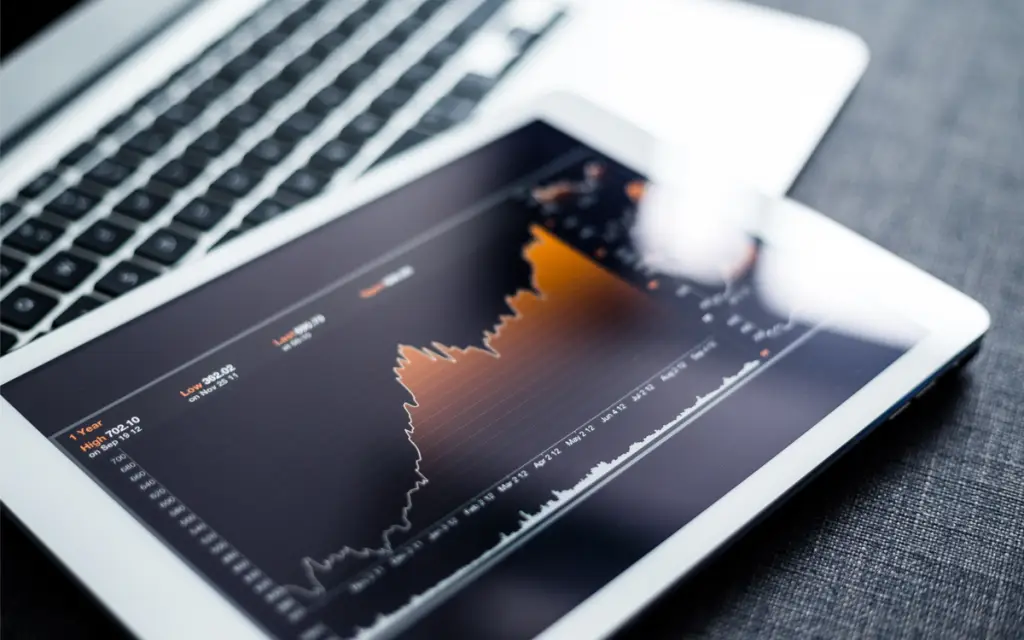Stock trading is a dynamic blend of analysis, intuition, and risk management, with a touch of adrenaline and the ability to stop in time. What does this have to do with gambling? In both cases, money is on the line between a successful bet and a big loss. However, stock trading takes place on a completely different level: it requires knowledge and a deep understanding of the market.
In stock trading, you can combine strategies, diversify your portfolio, and work with high returns. This approach has advantages and disadvantages, making it an important tool for those who prefer to actively manage their investments.

Particularities of Stock Trading: Speed and Strategy Decide Everything
It’s all about money, time, and reaction to events. An investor needs quick and sober analysis, especially in volatile markets. The uniqueness of these operations lies in the ability to quickly profit from asset price differences by consistently following trends.
Stock Trading vs. Long-Term Investing: A Battle of Strategies
 Stock trading is very different from long-term investing. While long-term investors pay attention to a company’s fundamentals, traders focus on technical signals and market behavior. It’s important to consider the specifics of these approaches and choose one based on your goals.
Stock trading is very different from long-term investing. While long-term investors pay attention to a company’s fundamentals, traders focus on technical signals and market behavior. It’s important to consider the specifics of these approaches and choose one based on your goals.
Successful Trading Examples:
- GameStop stock has experienced incredible growth in 2021, fueled by organized buying on Reddit. Professionals who recognized the trend early achieved hundreds of percent profits in just a few weeks.
- In March 2020, the stocks of many companies fell dramatically amid the panic surrounding the pandemic. Analysts who bought them at low prices doubled and tripled their investments in 3-4 months.
Advantages and Disadvantages of Stock Trading: A Goldmine of Opportunities or a Minefield?
Advantages: When Freedom of Action Is the Most Important Asset:
- Flexibility and High Returns. Unlike traditional investments, stock trading offers the opportunity to make money in a short period of time. For example, if Apple stock rises 3% in one day, the trader can lock in their profits within 24 hours. This allows us to react quickly to market changes.
- Control over investments. Active trading allows for constant monitoring of the process: you can change strategies, adapt to market conditions, use derivatives to minimize risk, and so on. This dynamism is what attracts major players.
Disadvantages: Hidden pitfalls of fast-paced trading:
- High risk: a constant balance between profit and loss. Risk-taking traders often face the fact that for every successful trade, there are dozens of failed ones.
- Emotional instability. The stock market is subject to sudden changes that affect the psyche of market participants. The market is unforgiving of mistakes, so discipline and self-control are important.
Trading stocks as part of a portfolio: risky or smart investment?
Unlike a passive approach, active trading allows you to react more quickly to market changes. Adding stock trading to your portfolio requires considering risks and careful planning. Balance is important: combining active trading activities with long-term methods can improve diversification.
Investing always involves balancing risk and return. Assessing one’s capabilities, good planning, and discipline make financial trading an effective tool in the hands of an investor.
Diversification through Trading: How to Avoid Going Bankrupt?
Short-term stock investments can be the lever that helps your portfolio manage risk. For example, at a time when long-term investments offer stable but low returns, stock trading can provide you with additional capital. Active trading requires discipline and control to avoid losses.
Active Trading and Speculation: Keep an Overview
A way to make money quickly, but with a high level of risk. It’s important to understand that speculation in securities requires an immediate response to fluctuations in the trading environment. Unlike investing, the goal here is to identify trends and sudden changes.
Speculation vs. Active Investing: Take Risk or Wait?
Speculation means that every price fluctuation can become an opportunity to make money. This is precisely where the risk lies: incorrectly predicting price movements can lead to losses. Dynamic investing aims to hold an asset for an extended period of time, which helps relieve pressure and reduce risk.
Tips for traders:
- Don’t gamble for all your money. One of the most important rules of the pros is never to invest all your money in one trade. Experienced traders advise not to invest more than 2% of your capital per trade.
- Focus on facts, not emotions. Tesla stock, for example, regularly “flies” and falls due to Elon Musk’s tweets. Controlling your emotions is your greatest ally.
Conclusion
 Combining stock trading with long-term investing is a winning recipe for a dish where each ingredient complements the other. The key is balance: Long-term investing provides stability and minimizes risk, while trading securities can be an effective tool for increasing returns.
Combining stock trading with long-term investing is a winning recipe for a dish where each ingredient complements the other. The key is balance: Long-term investing provides stability and minimizes risk, while trading securities can be an effective tool for increasing returns.

Stock trading helps you identify opportunities even in volatile conditions, and combining different approaches can make your investment portfolio more resilient. It’s worth starting with small investments, gaining experience, and analyzing the market. This is the only way to successfully manage your wealth.
 en
en  ru
ru  de
de  ar
ar  es
es  hi
hi  fr
fr  nl
nl  it
it  pt
pt  el
el 



